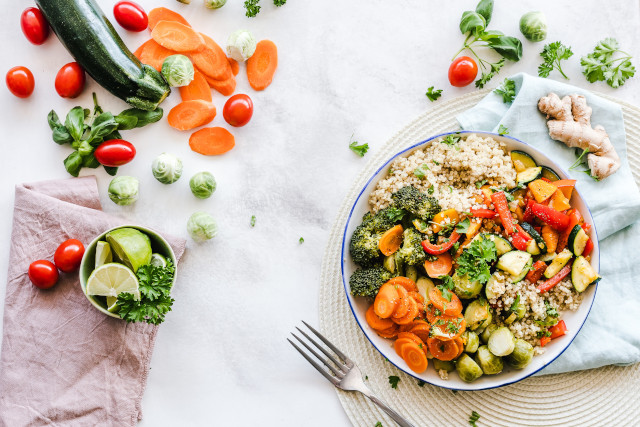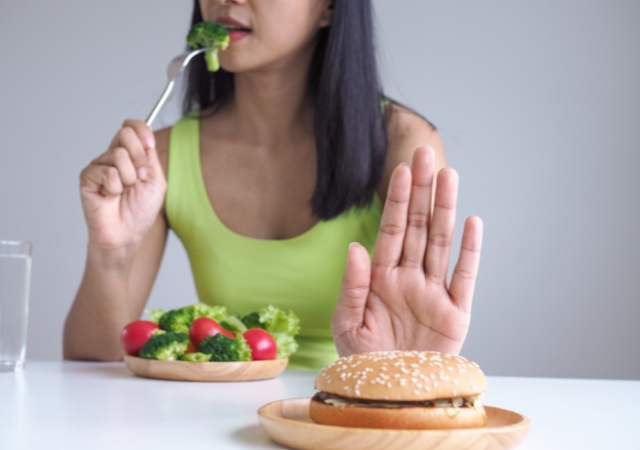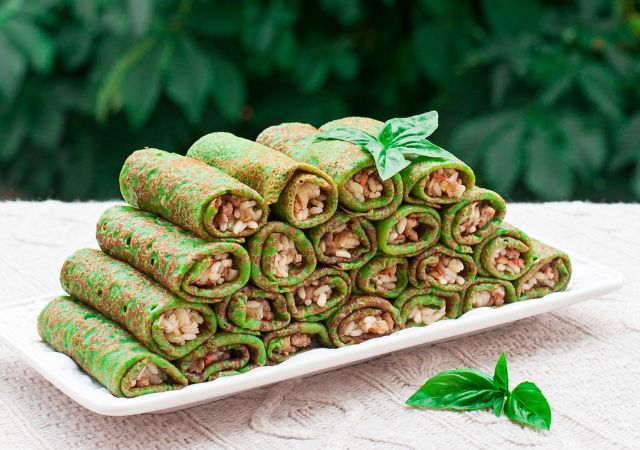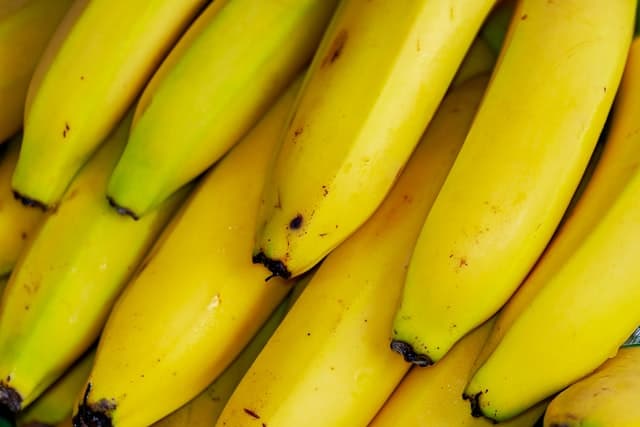
Banana is a fruit that is widely known and loved by consumers. Its popularity is supported by its stores' year-round availability and relatively low price. Bananas and diabetes - can you eat them?
Contents
- Banana Glycemic Index
- Nutritional properties of banana
- The effects of bananas on mood
- Banana calories
- Banana - general characteristics
- Diet rules for type 2 diabetes that are worth remembering
- Criteria for the correct choice of banana in diabetes
- A companion to the banana on a diabetic's plate
- Banana in basic diabetes
- How much does a banana weigh?
- A light diet what to eat?
- Banana - health-promoting properties
- Which bananas are best to buy?
- How best to store bananas?
If, after being diagnosed with diabetes, you were told that you will never be able to eat a banana again, it is worth reading the article. What should people with carbohydrate metabolism disorders pay attention to?
Banana Glycemic Index
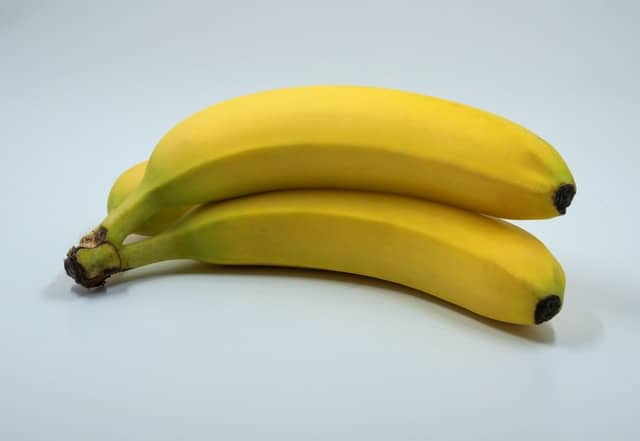
The glycemic index of bananas depends on their ripeness, among other factors. Green bananas have a glycemic index of 40 (low GI), while ripe fruits have already 72 (high GI). The glycemic index of bananas changes as the starch they contain is no longer resistant to digestion.
High GI foods are rapidly absorbed by the digestive system, causing an immediate increase in glycemia (blood glucose levels after eating), so diabetics should eliminate bananas from their diet altogether. The glycemic index of bananas also becomes high when they are cooked - baked, fried, or grilled. A low-GI diet can protect you from diabetes, heart disease, atherosclerosis, and kidney disease.
Nutritional properties of banana
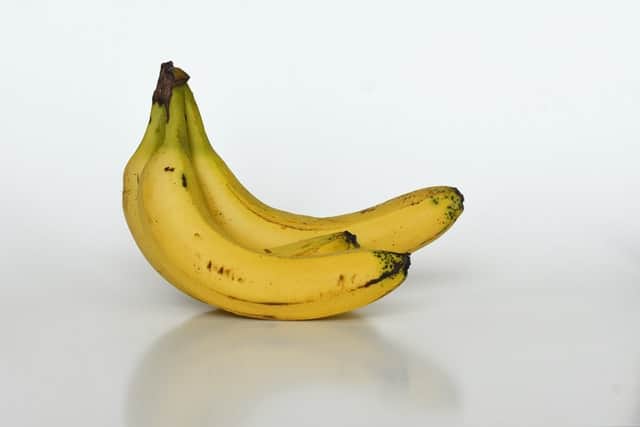
Banana is a high-calorie fruit and contains 99 kcal per 100 g of edible parts. This is compensated by a large number of nutrients it has. What does this mean in practice? When we eat a banana, in addition to calories, we provide our body with a dose of natural vitamins and minerals.
It is an excellent source of potassium, magnesium, and antioxidants in the form of carotenoids and vitamin C. This makes banana absolutely not a product providing only empty calories.
The effects of bananas on mood
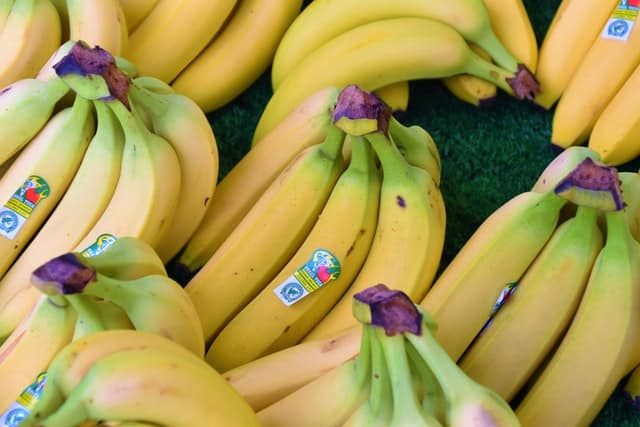
It is worth mentioning that it also has a beneficial effect on mood because it contains tryptophan. This amino acid is a building compound needed to produce serotonin, the hormone of happiness. All this makes this fruit worth including in the diet of people with diabetes.
In 100 grams of banana, we have 358 grams of potassium, making this fruit one of the leading products that effectively reduce blood pressure.
Thanks to its pectin content, banana is also effective in lowering the level of bad cholesterol.
Studies show that bananas can reduce the risk of kidney cancer, and the starch in green bananas can effectively reduce the risk of colon cancer.
Banana calories
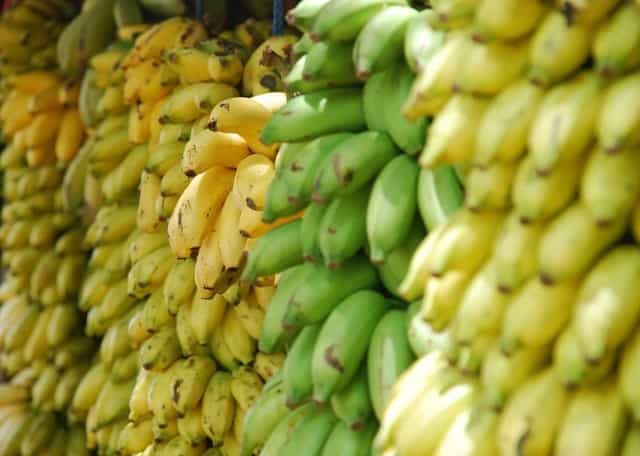
Banana has many beneficial properties, but it is very caloric compared to many other fruits. A 100 g fresh banana has 90 calories, making it one of the top fruits with the most calories. Eating a lot of bananas can hinder weight loss and lead to uncontrolled weight gain.
Banana - general characteristics
Bananas were probably cultivated as early as 7,000 years ago in Malaysia and India. Then they appeared in Africa, which is still a major export product. Bananas are picked for sale unripe, and in this state, they land on ships, where they ripen during the journey. For this reason, the fruits found in Europe do not have as many vitamins and minerals as those that mature in natural conditions.
The size of a banana usually does not exceed 15 centimetres, but in some cases, it can be up to 30 centimetres long. Banana fruits vary depending on the species: the degree of mealiness, sugar content, and application.
A dietician will advise you whether you should eat bananas and how to incorporate them into your daily diet.
Diet rules for type 2 diabetes that are worth remembering
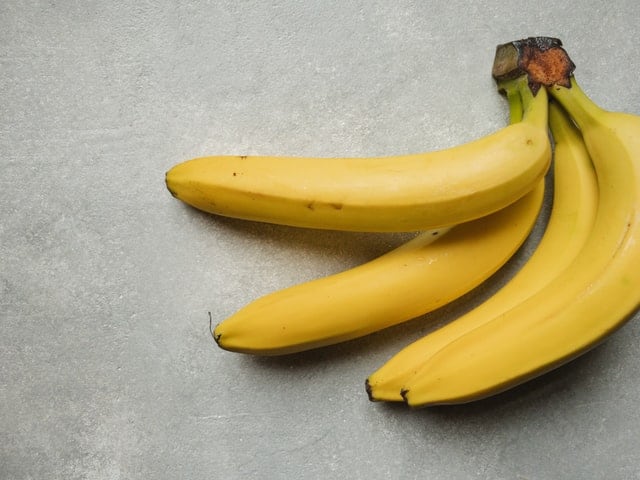
Contrary to popular belief, the so-called diabetic diet does not have to be strict and full of sacrifices. Self-control and common sense are enough to draw real pleasure from the meals eaten daily despite the disease. When composing meals, remember that they should be balanced and healthy (preferably based on fruits and vegetables from organic farming).
Tomatoes, cucumbers, peppers, onions, radishes, celery, and salads are vegetables that should be permanently included in the daily menu of a diabetic. People suffering from this disease should choose lean meats and fatty marine fish (e.g., salmon, herring, mackerel), which are best steamed or stewed.
Vegetable oils such as canola and olive oil are the most beneficial for health. An important habit that people with type 2 diabetes should develop is drinking still water with low sodium content and herbal and fruit teas without sweetening.
Ready-made nectars and drinks should be replaced with homemade vegetable and fruit juices, which are much healthier and devoid of excess sugar, artificial colouring, or preservatives. It is worth mentioning that patients with normal weight can consume no more than 15 g of simple sugars per day.
Criteria for the correct choice of banana in diabetes

According to diabetologists and nutritionists, the most appropriate nutrition model for diabetics is a diet with a low glycemic index. Products that have a high GI cause a rapid increase in glycemia after a meal, followed by a rapid decrease. This makes it difficult to maintain normal blood glucose values.
Contrary to popular myths, bananas' glycemic index is not high. The most important characteristic of this fruit, which will allow a diabetic to choose a better option for himself, is its ripeness. It is important to remember to choose the less ripe pieces.
The differentiating feature is the glycemic index value, which is 51 in a ripe banana and drops to 30 in a green banana. This drop is due to the resistant starch found in it. It causes the energy from the banana to take longer to be released, so there is no rapid rise in glycemia after consumption. An additional benefit is its beneficial effect on the gut microbiome.
A companion to the banana on a diabetic's plate
Unfortunately, eating a banana as a separate meal as a snack is not a good idea. However, providing it with good company and composing a wholesome meal is not difficult at all. We want to maintain a constant sugar level in the blood, so every meal for a person treated for diabetes must provide the body with carbohydrates, proteins, and fats.
It should also contain dietary fibre, which slows the release of glucose into the blood, and, ideally, helps with spices that help maintain normal blood glucose, such as cinnamon.
Banana in basic diabetes
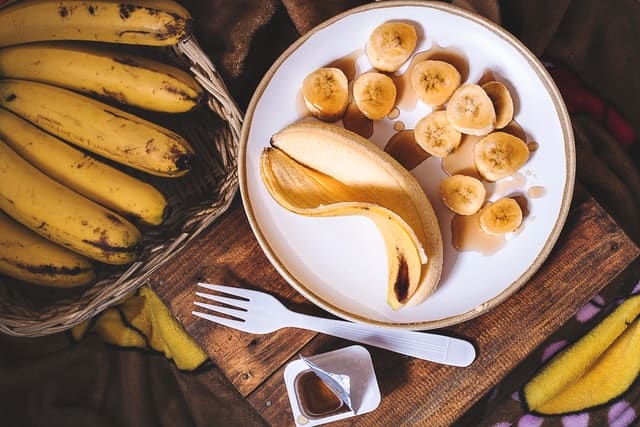
The easiest way to incorporate banana into your second breakfast is as follows: banana + protein source (natural yoghurt/Greek yoghurt/ kefir/natural skyr cheese/sugar-free coconut yoghurt) + healthy fat source (walnut/almond/avocado) + fibre source (oatmeal/wheat bran) + cinnamon.
How much does a banana weigh?
The average weight of a banana is about 200g. With the peel removed, the average banana weighs 120g.
A light diet what to eat?
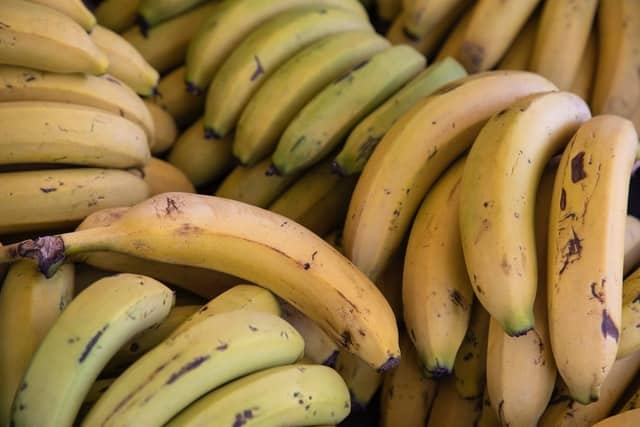
Bananas should be in the diet of people who suffer from stomach ulcers. Studies have shown that the fruit stimulates the secretion of mucus that forms a protective layer in the stomach, thus preventing the harmful effects of gastric juices. An easy-to-digest diet should not burden the digestive system. What products should be included in a therapeutic easy-to-digest diet?
Lean meat, lean dairy products, white rice, and wheat bread. Food should be prepared in steam, boiled water, stewed, or baked in foil. Recommended fruits include bananas, apricots, baked apples, raspberries, and strawberries. Vegetables should be boiled or mashed: you can eat peeled tomatoes, carrots, beets, parsley, and pumpkin. You can eat light soups, lean broths, dumplings, small pasta, and boiled potatoes on an easy-to-digest diet.
Banana - health-promoting properties
Many people wonder if bananas are healthy. It turns out that thanks to the appropriate content of vitamins, minerals, and other nutrients (pectin or antioxidants), bananas should be on the daily menu of each person. It is enough to mention anemics or diabetics, for whom unripe bananas are the best solution. Moreover, this fruit helps lose weight and improve your mood.
Which bananas are best to buy?
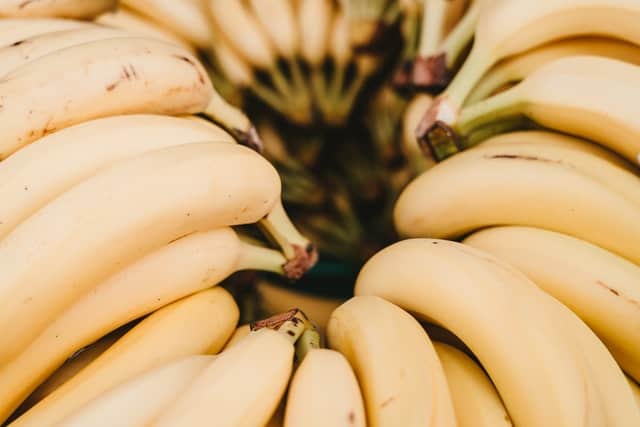
Knowing already how many health properties a banana has, it is worth considering which fruit is best to buy. As already highlighted, diabetics should reach for unripe, green bananas.
This also applies to people who care about their weight or are on a weight loss diet. If we want to quickly provide the body with energy, we can reach for ripe bananas.
In this case, banana chips are also worth mentioning - it is best to check the product data on the package because most manufacturers sweeten the snacks.
How best to store bananas?
The fruit is best kept in a dark and cool place with access to fresh air. It is best to wash the banana after purchase, as it may have been repeatedly sprayed with ripening agents during transport. Then the bananas will keep their freshness.
To prolong the ripening period of a banana, you can wrap its end in cling film. Peeling the overripe fruit from the bunch also helps.


